Get a free quote
If you have questions about our services, plans, or pricing we are here for you. Fill out the form below and we will communicate with you by email (and of course provide you with a free estimate).
FEBRUARY 01 2022 /
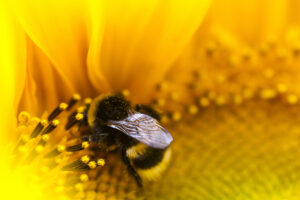 The American Bumble Bee is the calmest of the bunch. Known to rarely sting, these bees don’t often swarm. Their bodies are stocky and almost cartoon-ish in appearance. Exoskeletal bristles give them a “fuzzy” texture that allows them to pollinate plants more easily.
The American Bumble Bee is the calmest of the bunch. Known to rarely sting, these bees don’t often swarm. Their bodies are stocky and almost cartoon-ish in appearance. Exoskeletal bristles give them a “fuzzy” texture that allows them to pollinate plants more easily.
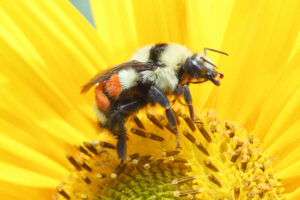 Similar in appearance to its American counterpart, the Tri-Colored Bumble Bee is yellow and black with a bright orange midsection. Tri-Colored Bumble Bees make honey to feed their colony’s larvae into adulthood. Full-developed bees go on to drink nectar.
Similar in appearance to its American counterpart, the Tri-Colored Bumble Bee is yellow and black with a bright orange midsection. Tri-Colored Bumble Bees make honey to feed their colony’s larvae into adulthood. Full-developed bees go on to drink nectar.
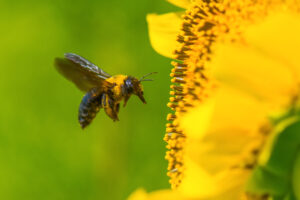 Large and in charge, the Eastern Carpenter Bee is a massive species. They are mainly black and yellow colored with a subtle metallic tint. Unlike most bee types, the Eastern Carpenter Bee builds nests in wood and other similar materials. These great pollinators visit fruit, vegetable, legume, and decorative flower crops.
Large and in charge, the Eastern Carpenter Bee is a massive species. They are mainly black and yellow colored with a subtle metallic tint. Unlike most bee types, the Eastern Carpenter Bee builds nests in wood and other similar materials. These great pollinators visit fruit, vegetable, legume, and decorative flower crops.
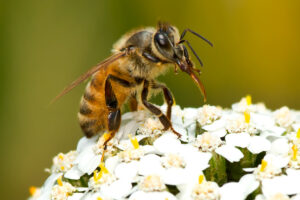 The Honey Bee is probably the most well-known species on the planet. With several subspecies, the Honey Bee is a broad term describing a class of bees that produce and store honey. Here in the Carolinas, we often see the Western Honey Bee which has (for the most part) been domesticated for crop pollination and honey production. Products made of beeswax, honey, and royal jelly would not exist if it weren’t for the Western Honey Bee. Many cosmetics, personal care items, and home good products are made up of one of these ingredients.
The Honey Bee is probably the most well-known species on the planet. With several subspecies, the Honey Bee is a broad term describing a class of bees that produce and store honey. Here in the Carolinas, we often see the Western Honey Bee which has (for the most part) been domesticated for crop pollination and honey production. Products made of beeswax, honey, and royal jelly would not exist if it weren’t for the Western Honey Bee. Many cosmetics, personal care items, and home good products are made up of one of these ingredients.
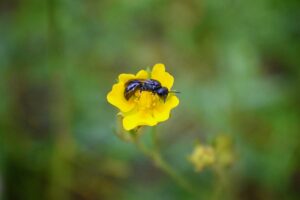 More efficient at pollinating than the Honey Bee, Mason Bees will pollinate even during wet or cold conditions. In addition, Mason Bees are solitary and do not live in hives with other bees. Rather, they find an empty cavity and will create a nest. Unlike Honey Bees, this species is said to be “hardworking, yet gentle” thanks to their non-aggressive temperament.
With so many more bee species calling the Carolinas home, knowing a few of the species you might find buzzing around in your own yard helps bring awareness to this declining insect. Next time you spot a bee, take the time to observe its behavior and appreciate the work it’s doing for you!
More efficient at pollinating than the Honey Bee, Mason Bees will pollinate even during wet or cold conditions. In addition, Mason Bees are solitary and do not live in hives with other bees. Rather, they find an empty cavity and will create a nest. Unlike Honey Bees, this species is said to be “hardworking, yet gentle” thanks to their non-aggressive temperament.
With so many more bee species calling the Carolinas home, knowing a few of the species you might find buzzing around in your own yard helps bring awareness to this declining insect. Next time you spot a bee, take the time to observe its behavior and appreciate the work it’s doing for you!
